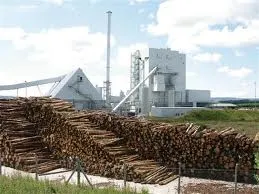
Increased use of biomass power proposed for Australia
The Australian Greens is calling for investment in clean energy infrastructure.
The political party has published a new energy proposal calling for investment in clean energy infrastructure.
The plan, titled “True Progress: Energy 2029,” encourages increased use of biomass in home heating applications and industrial power generation. The Greens also recommended building eighteen 25 MW biomass plants across Australia’s wheat belt. Small-scale power production and algae biomass are also addressed in the proposal.
Part of the plan calls for biomass units to be installed adjacent to solar power facilities to augment power output during times of solar and wind “droughts.”
According to the report’s authors, the proposed systems would incorporate a biomass thermal heater alongside molten salt tanks at concentrating solar thermal (CST) sites. Biomass would be fired, heating the molten salt reservoirs, allowing the existing steam power cycle, turbine and transmission to be utilized. In this configuration, biomass power would essentially serve as a backup to the CST system.
The report notes that the number of homes using biomass heat has increased tenfold in three years, while biomass contributes between 5 and 20 percent of electricity production in some European countries. However, biomass power contributes less than 1 percent of the power mix in Western Australia, and less than 2 percent nationwide.
“This is despite the fact that per head of population [Western Australia] has more land suitable and available for growing biomass crops than any other state in the world,” states the report.
According to the report, renewable energy accounted for approximately 6 percent of electricity consumed in Western Australia in 2011/201, with landfill gas and biomass accounted for 7 percent of the renewable energy mix.
For more.








![Cross Domain [Manu + SBR + ABF + ABR + FMCG + HBR + ]](https://cmg-qa.s3.ap-southeast-1.amazonaws.com/s3fs-public/styles/exclusive_featured_article/public/2025-01/earth-3537401_1920_4.jpg.webp?itok=WaRpTJwE)
![Cross Domain [SBR + ABR]](https://cmg-qa.s3.ap-southeast-1.amazonaws.com/s3fs-public/styles/exclusive_featured_article/public/2025-01/pexels-jahoo-867092-2_1.jpg.webp?itok=o7MUL1oO)









 Advertise
Advertise


